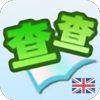synchropter造句
例句與造句
- The first turbine-powered helicopter was also a Kaman synchropter.
- This configuration is sometimes referred to as a synchropter.
- The K-MAX relies on two primary advantages of synchropters over conventional helicopters : The increased efficiency compared to conventional rotor-lift technology; and the synchropter's natural tendency to hover.
- At the same time, the synchropter is more responsive to pilot control inputs, making it possible to easily swing a load, or to scatter seed, chemicals, or water over a larger area.
- The first turbine-powered, shaft-driven helicopter was the Kaman K-225, a development of Charles Kaman's K-125 synchropter, which used a Boeing T50 turboshaft engine to power it on 11 December 1951.
- It's difficult to find synchropter in a sentence. 用synchropter造句挺難的
- Not only airplanes, but also helicopters saw rapid development in the Second World War, with the introduction of the Focke Achgelis Fa 223, the Flettner Fl 282 synchropter in 1941 in Germany and the Sikorsky R-4 in 1942 in the USA.
- Conversely, the synchropter and transverse-mounted rotor counter rotating rotorcraft have two large horizontal rotor assemblies mounted side by side, ( like a Bell / Boeing V-22 tilt rotor ) helicopters use differential collective pitch to affect the roll of the aircraft . All of these configurations use differential cyclic pitch to control movement about the yaw axis, tilting the rotors in opposite directions to cause the aircraft to spin in the direction of the tilted rotors.
- Of all the commonly used rotor systems-- Sikorsky system ( conventional single-rotor ), NOTAR ( if different from Sikorsky system ), Piasecki system ( tandem rotors ), Kamov system ( coaxial rotors ), and Flettner system ( synchropter ), how do they rank in the order from least stable to most stable ( or if you prefer, from most stable to least stable ) ? talk ) 10 : 56, 29 November 2016 ( UTC)
